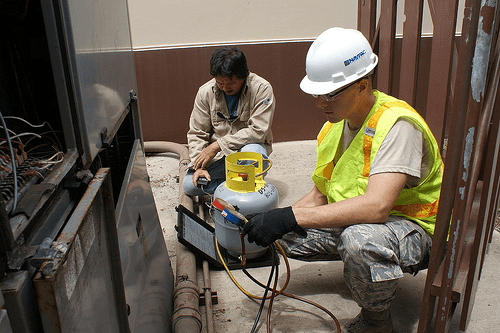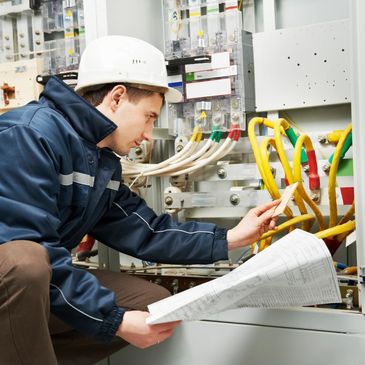Finding the most effective Heating Contractor in Brownwood TX for Your Winter Months Demands
The Significance of Heating And Cooling Setup: Key Factors To Consider for a Comfy Indoor Environment
The installment of a Heating and cooling system is a vital part in accomplishing a comfortable and energy-efficient interior atmosphere. Elements such as the suitability of the system for particular building requirements, right sizing to circumvent inefficiencies, and the know-how of service providers for a quality installment play crucial roles. The fostering of advanced modern technologies can substantially improve system efficiency.
Choosing the Right System

When picking a HVAC system, it is crucial to examine the capacity needed to properly heat or cool down the area without exhausting the system, which can lead to increased wear and operational prices. Consulting with a professional heating and cooling specialist can provide useful understandings right into selecting a system that straightens with both the expected use and the architectural style patterns of the structure.
In addition, taking into consideration the integration of smart modern technology can boost system administration and monitoring, offering higher control and possible cost financial savings. By meticulously evaluating these factors, one can make sure the choice of an a/c system that not only satisfies prompt needs however also adds to long-term functional sustainability and owner convenience.
Comprehending Power Efficiency
Understanding power efficiency is important when considering a Heating and cooling installation, as it directly influences both the environmental footprint and the operational prices of the system. The efficiency of an A/c system is commonly suggested by scores such as SEER (Seasonal Power Effectiveness Proportion) for air conditioners or AFUE (Annual Gas Application Effectiveness) for furnaces.

Buying an energy-efficient heating and cooling system not just translates to set you back savings but also contributes favorably to ecological conservation by reducing greenhouse gas emissions. Additionally, many jurisdictions offer rewards or rebates for the installment of high-efficiency systems, additionally improving their financial appeal.
When reviewing energy effectiveness, consider innovative functions such as variable speed motors, smart thermostats, and zoning capabilities. These innovations boost the system's capacity to adapt to differing need, consequently optimizing energy use. It is critical to speak with cooling and heating professionals that can supply understandings right into the most effective choices tailored to specific environment conditions and use patterns, ensuring optimal efficiency and comfort.
Value of Appropriate Sizing

Alternatively, a small heating and cooling system will struggle to get to the wanted temperature, specifically during extreme weather condition problems. This can result in constant procedure, resulting in greater energy costs and possible getting too hot of system elements. In addition, insufficient sizing can lead to irregular temperature distribution, causing certain areas of a structure to be too amazing or too warm.
To attain the appropriate sizing, a comprehensive load estimation is vital. This entails assessing different variables such as the building's square video footage, insulation levels, window kinds, and neighborhood environment conditions. By accurately figuring out the home heating and cooling like it requirements of a room, heating and cooling professionals can suggest systems that make sure efficient operation, minimized energy usage, and boosted indoor convenience.

Making Certain Top Quality Installation
A seamless cooling and heating installation is the foundation of a system's long life and performance. Making sure top quality installation involves precise focus to detail, adherence to sector standards, and utilizing skilled specialists. The process begins with selecting a qualified and experienced heating and cooling professional. This specialist must have comprehensive expertise of diverse systems and be experienced at analyzing the certain needs of the structure.
Correct setup goes past plain placement of equipment. It entails accurate calibration to make certain optimum air flow, efficient energy intake, and consistent temperature level circulation. This consists of precise ductwork installment, ensuring connections are safe and leak-free, which is vital for keeping system efficiency and indoor air top quality.
Furthermore, the execution of innovative diagnostic tools throughout setup can find possible concerns early, avoiding expensive fixings and expanding the life expectancy of the system. The professional ought to likewise guarantee that all parts work and that the system adheres to regional building ordinance and regulations.
Routine Maintenance Practices
Once the structure for a high-performing a/c system is established via top quality installment, the emphasis must shift to regular maintenance practices to guarantee continued efficiency and reliability. Regular maintenance not only prolongs the lifespan of the system but additionally boosts interior air high quality, reduces power usage, and prevents expensive repair services. Essential upkeep tasks include consistently transforming air conditioning service and repair air filters, cleaning evaporator and condenser coils, and inspecting the system for leaks or clogs.
This simple job can substantially enhance air circulation and system effectiveness. In addition, professional technicians need to examine the system annually, inspecting for cooling agent degrees, electric links, and total system performance.
Interest to look here ductwork is likewise critical; securing and cleaning air ducts on a regular basis stops air loss and contamination. Implementing an upkeep timetable ensures that small concerns are dealt with prior to they rise, securing the system's operational stability. By adhering to these maintenance practices, homeowners can optimize their HVAC system's performance and keep a comfortable interior atmosphere year-round.
Final Thought
By picking an appropriate system tailored to particular structure demands, recognizing power performance, and making sure proper sizing, ineffectiveness can be lessened. The participation of competent contractors guarantees high quality setup, while the combination of advanced innovations boosts system efficiency and monitoring.
A number of kinds of A/c systems are available, including split systems, crossbreed systems, duct-free systems, and packaged heating and air systems, each with distinctive advantages and constraints.
Comprehending energy effectiveness is important when taking into consideration an A/c setup, as it directly affects both the environmental impact and the functional prices of the system. The efficiency of a HVAC system is generally indicated by ratings such as SEER (Seasonal Energy Efficiency Proportion) for air conditioners or AFUE (Annual Fuel Use Effectiveness) for furnaces (Electrician in Brownwood TX).As soon as the structure for a high-performing Cooling and heating system is established through top quality setup, the emphasis should move to routine upkeep methods to guarantee continued effectiveness and reliability. Furthermore, expert service technicians need to examine the system yearly, checking for refrigerant degrees, electrical links, and overall system efficiency